Java is an island in Indonesia that is home to a rich and diverse bird fauna. With over 400 species, the birds of Java range from common urban birds like the Javanese sparrow to rare and elusive species like the Javan hawk-eagle.
Many bird species in Java are endemic, meaning they are found nowhere else in the world. The island’s geography and habitat diversity, from lowland forests to montane forests and volcanic mountains, have allowed for the evolution of a unique avian community.
In this article, we will explore some of the most fascinating and iconic birds that can be found on the island of Java.
1. Green Peafowl
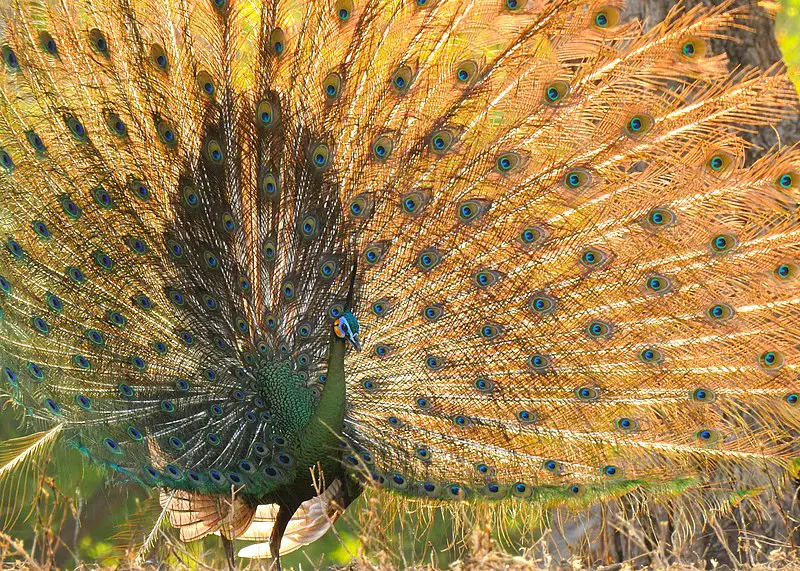
The Green Peafowl is a beautiful bird native to Southeast Asia and Indochina. It has bright green plumage with blue-green neck feathers, which have earned it the name “Indonesian peacock”.
This stunning species of peafowl is Myanmar’s national bird and was once abundant throughout its range. Unfortunately, its population has declined drastically in recent years due to habitat loss and hunting for food.
The few remaining populations are mainly found in Cambodia (mainly northern and eastern provinces) as well as parts of Vietnam.
Due to this drastic decline, the IUCN Red List now classifies the Green Peafowl as endangered. Conservation efforts must be taken soon if we want to save this majestic species from extinction.
Scientific classification:
| Kingdom | Animalia |
| Phylum | Chordata |
| Class | Aves |
| Order | Galliformes |
| Family | Phasianidae |
| Genus | Pavo |
| Species | P. muticus |
Also Featured In: Most Common Birds in China,
2. Lesser Adjutant
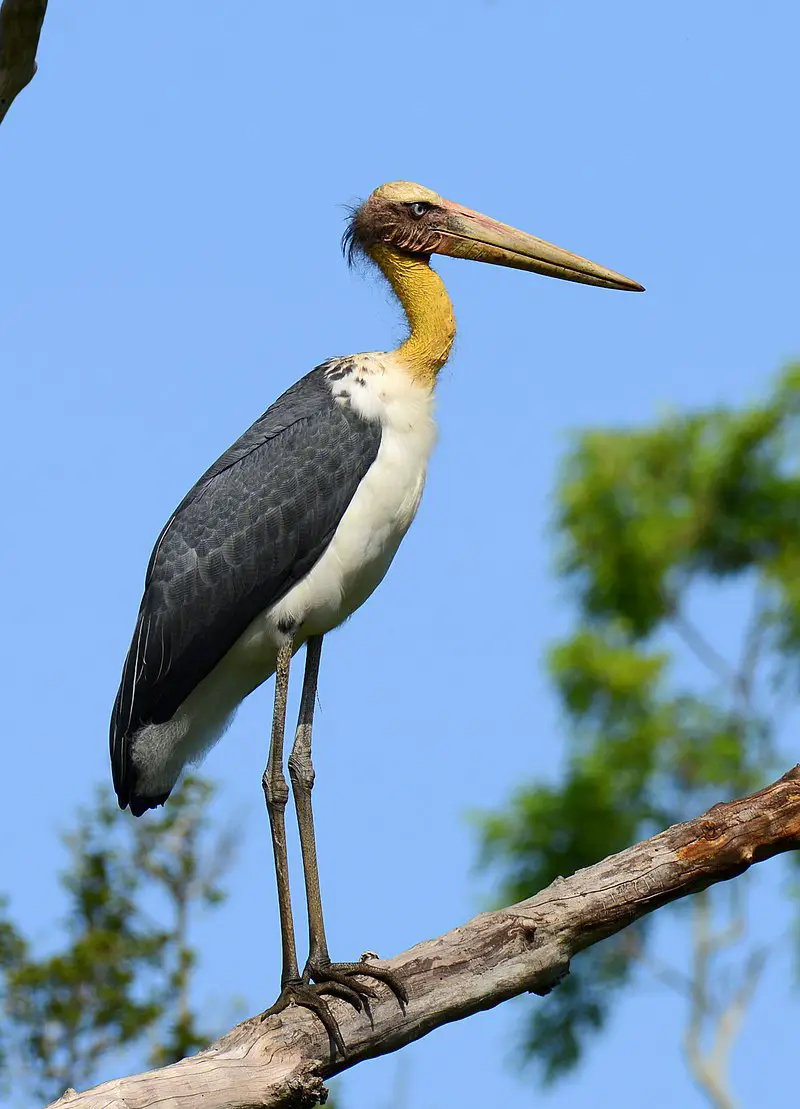
The Lesser Adjutant is a large wading bird found in the stork family Ciconiidae. It has an unmistakable profile, with its bare neck and head distinguishing it from other species of its genus.
This impressive bird is solitary in nature, preferring to live near wetland habitats where it can feed on fish, frogs and insects that inhabit these areas.
The Lesser Adjutant lives all over India as well as Southeast Asia into Java making them a widespread species.
They are also less likely scavengers than their larger counterpart –the Greater Adjutant Bird -making them more unique amongst their peers.
Not only do they possess this interesting trait but due to their size and ability to fly long distances they play an important role within local ecosystems across Asia keeping things balanced and healthy for future generations.
Scientific classification:
| Kingdom | Animalia |
| Phylum | Chordata |
| Class | Aves |
| Order | Ciconiiformes |
| Family | Ciconiidae |
| Genus | Leptoptilos |
| Species | L. javanicus |
Also Featured In: Most Common Types of Bangladeshi Birds, Birds of Karnataka
3. Green Junglefowl
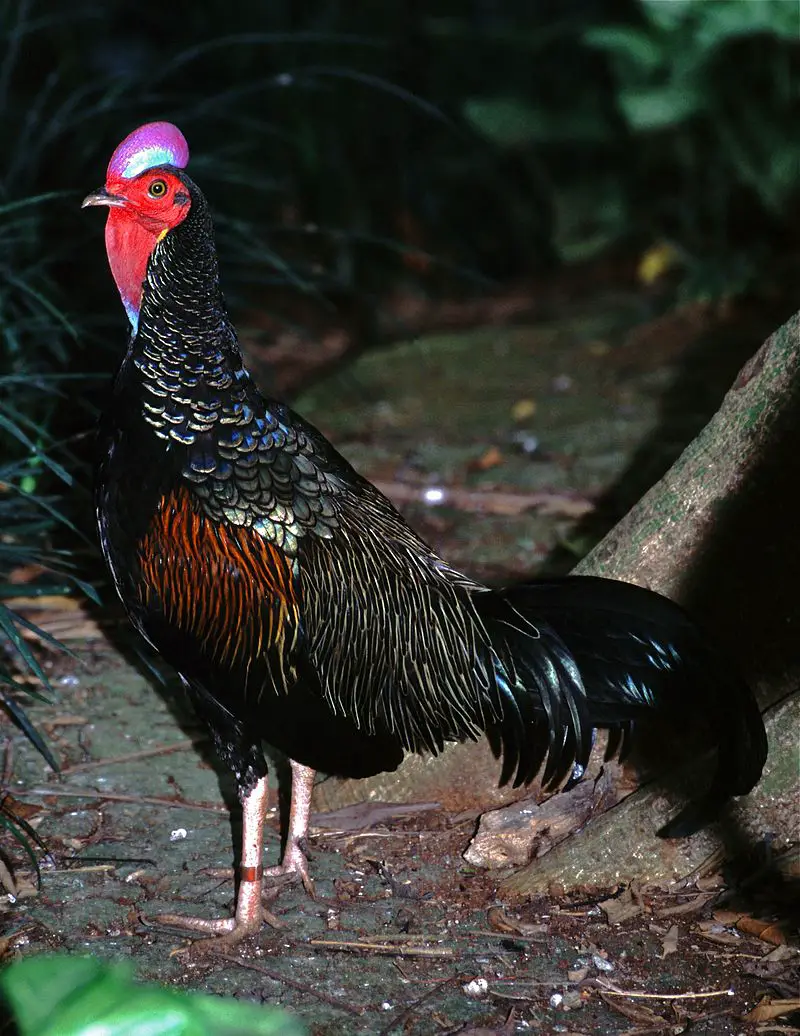
The Green Junglefowl is a species of bird belonging to the pheasant family Phasianidae. It stands up to 75 cm in length and can be found inhabiting dense forests throughout India, Southeast Asia, Indonesia and parts of China.
This beautiful creature has been around for at least four million years making it one of the oldest surviving members of its kind
Its distinct green plumage makes it stand out from other jungle fowls while also making it more vulnerable to predators in its natural environment.
Unfortunately hybridization with domestic chickens has also occurred as reported by some researchers over recent times which could threaten this unique species’ survival if not addressed properly.
Scientific classification:
| Kingdom | Animalia |
| Phylum | Chordata |
| Class | Aves |
| Order | Galliformes |
| Family | Phasianidae |
| Genus | Gallus |
| Species | G. varius |
Also Featured In: Christmas Island Birds, Common Birds of Indonesia
4. Java Sparrow
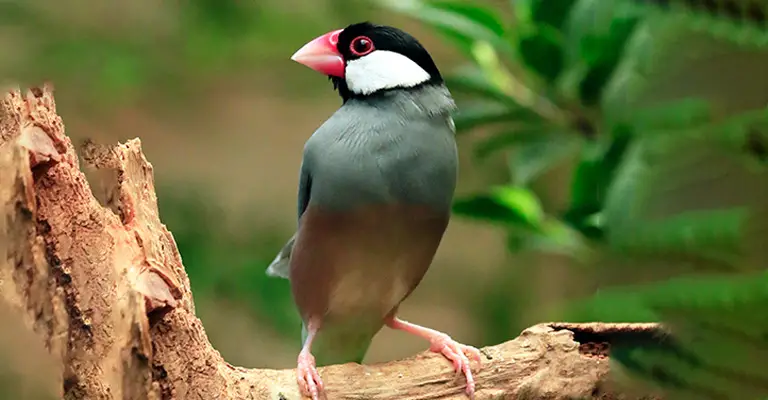
The Java sparrow is a small passerine bird that belongs to the estrildid finch family. It inhabits parts of Indonesia, including Java, Bali and Bawean islands, but has also been introduced in many other countries as a popular cage bird.
Its size can vary from 13–14 cm and it typically weighs around 20 grams. The feathers are brownish with white patches on its wings and tail while males feature black heads with pink or bluish beaks.
They feed mainly on grains like rice, millet or sorghum which explains their nickname “Java Rice Bird”; however they have also developed an appetite for insects when living close to human settlements.
Scientific classification:
| Kingdom | Animalia |
| Phylum | Chordata |
| Class | Aves |
| Order | Passeriformes |
| Family | Estrildidae |
| Genus | Padda |
| Species | P. oryzivora |
Also Featured In: Finches Species, Aviary Birds You Should Know
5. Cerulean Kingfisher
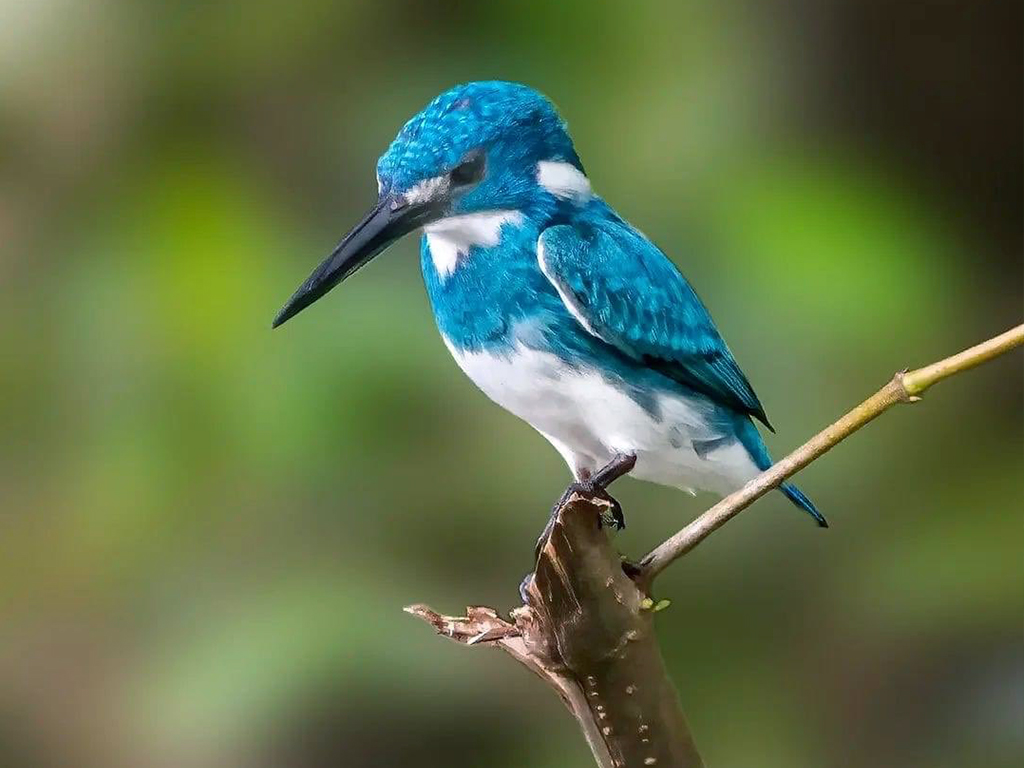
The Cerulean Kingfisher is a beautiful bird found in parts of Indonesia. It has an overall metallic blue colouring, making it look very similar to the common kingfisher – however, this species features white underneath instead of orange.
Males are typically bluer than females which have a more greenish cast. This type of kingfisher is sometimes referred to as the “small blue kingfisher” in Indonesia and elsewhere but should not be confused with other small birds that share its name.
Due to their unique plumage they can easily be distinguished from other species when seen up close or even at a distance depending on light conditions.
The Cerulean Kingfishers’ bright colours make them one of the most iconic members amongst Indonesian wildlife.
Scientific classification:
| Kingdom | Animalia |
| Phylum | Chordata |
| Class | Aves |
| Order | Coraciiformes |
| Family | Alcedinidae |
| Subfamily | Alcedininae |
| Genus | Alcedo |
| Species | A. coerulescens |
Also Featured In: Kingfishers Species, Birds that Found in Sumatra
6. Javan Kingfisher
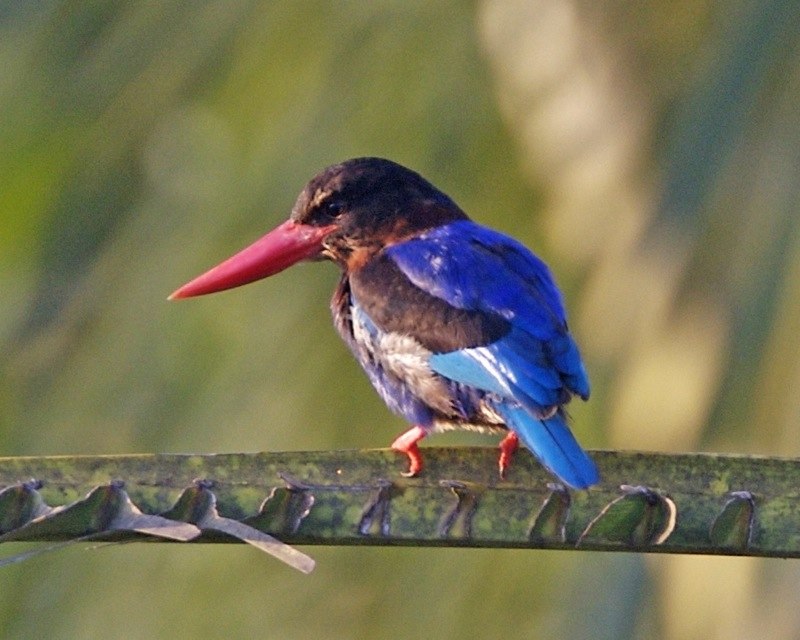
The Javan kingfisher is a species of medium-sized bird endemic to the Indonesian islands of Java and Bali.
It has an impressive deep blue body with a vibrant turquoise underbelly, making it one of the most beautiful members of its subfamily Halcyoninae.
The large head and bill are typical characteristics among kingfishers, but this species isn’t as well equipped for aquatic hunting compared to other birds in its family.
Instead they feed on insects found near lakes or riversides, which makes them more dependent on humans than their aquatic relatives who can catch fish from any bodies of water.
Despite these limitations, the Javan Kingfisher’s bright feathers make it an eye-catching sight when spotted near freshwater habitats.
Scientific classification:
| Kingdom | Animalia |
| Phylum | Chordata |
| Class | Aves |
| Order | Coraciiformes |
| Family | Alcedinidae |
| Subfamily | Halcyoninae |
| Genus | Halcyon |
| Species | H. cyanoventris |
Also Featured In: Birds that Commonly Found in Bali,
7. Pink-Headed Fruit Dove
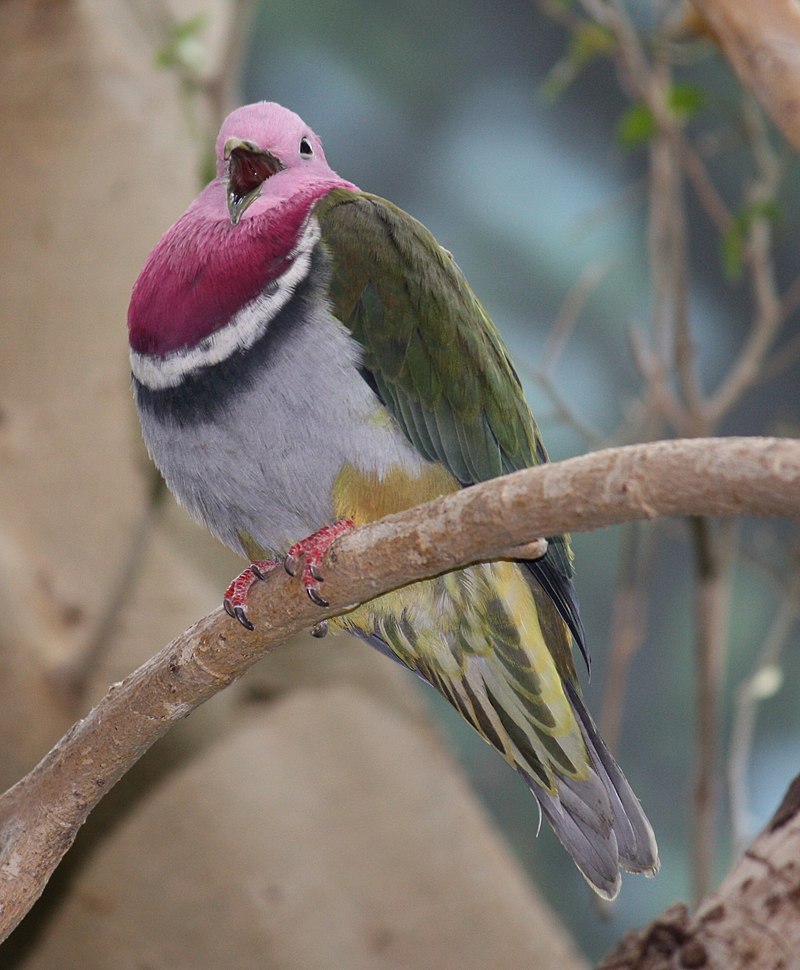
The Pink-headed Fruit Dove is an exquisite little bird, with a vibrant pink head and neck. It resides in the mountain forests of Indonesia at altitudes between 1000 to 2200 metres.
They build flimsy nests in trees and lay one or two white eggs per clutch. The rest of its plumage consists of bright green wings and tail, plus blue on its upper back feathers that shine under sunlight.
Its beak is blackish grey while orange eyes complete the stunning look. These birds feed mainly on small fruits found only in their native habitat such as figs but will also eat insects like termites for protein supplement .
In terms of behaviour they are shy creatures rarely seen alone out from hiding spots inside thick vegetation; however when breeding season comes they can be heard due to their distinctive chirping sounds which attracts mates during courtship displays.
Scientific classification:
| Kingdom | Animalia |
| Phylum | Chordata |
| Class | Aves |
| Order | Columbiformes |
| Family | Columbidae |
| Genus | Ptilinopus |
| Species | P. porphyreus |
Also Featured In: birds of pink,
8. Australasian Grebe
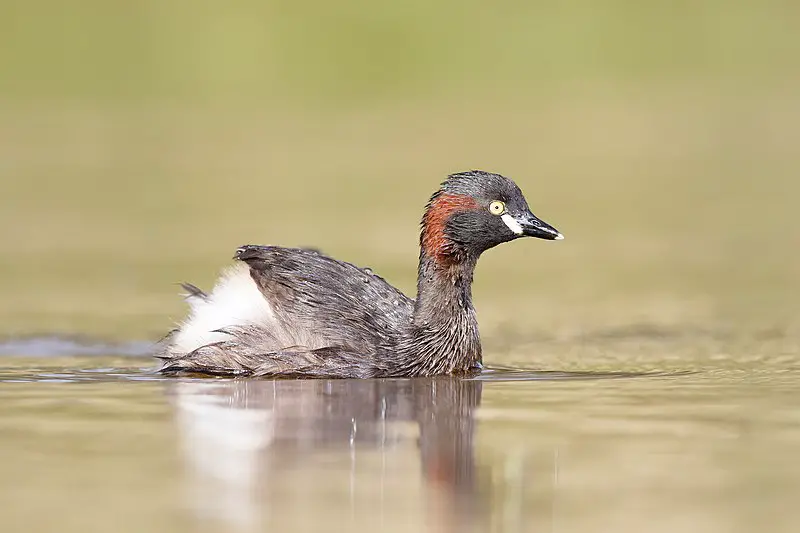
The Australasian grebe is a small waterbird that is frequently seen on fresh water lakes and rivers in Australia, New Zealand, and the Pacific islands. It is one of the smallest members of the grebe family, measuring only 25-27 cm in length.
The bird has a dark brown upper body and a glossy-black head and neck, making it quite striking in appearance.
Both male and female Australasian grebes look alike, and the species is known for its strong swimming and diving abilities.
Due to its reliance on freshwater ecosystems, the Australasian grebe is highly vulnerable to habitat loss and other environmental threats.
Conservation efforts are underway to protect this unique and important bird species.
Scientific classification:
| Kingdom | Animalia |
| Phylum | Chordata |
| Class | Aves |
| Order | Podicipediformes |
| Family | Podicipedidae |
| Genus | Tachybaptus |
| Species | T. novaehollandiae |
Also Featured In: Birds that Live around Brisbane, Birds that Live around Victoria
9. Temminck’s Babbler
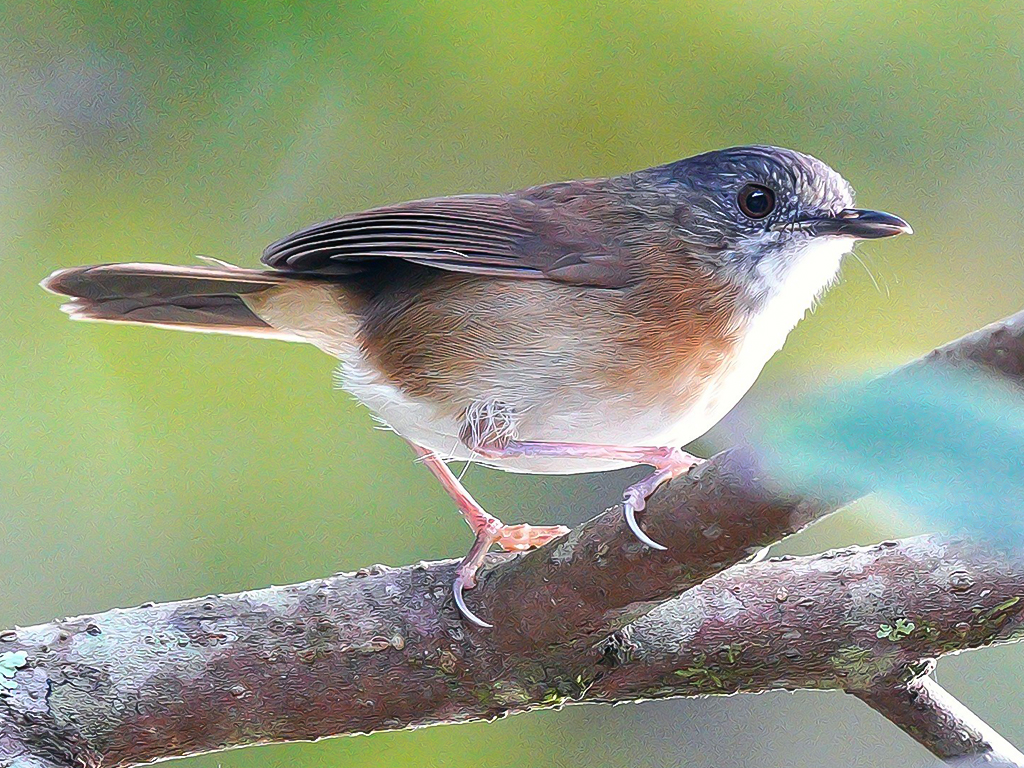
Temminck’s babbler, a member of the Pellorneidae family, is a bird species found in Borneo and Java. These birds make their home in subtropical or tropical moist lowland forests.
The bird’s name honors a Dutch naturalist named Coenraad Jacob Temminck. These babblers are unique and interesting birds.
Scientific classification:
| Kingdom | Animalia |
| Phylum | Chordata |
| Class | Aves |
| Order | Passeriformes |
| Family | Pellorneidae |
| Genus | Pellorneum |
| Species | P. pyrrogenys |
Also Featured In: Birds that Live in Borneo Island,
10. Bar-Winged Prinia
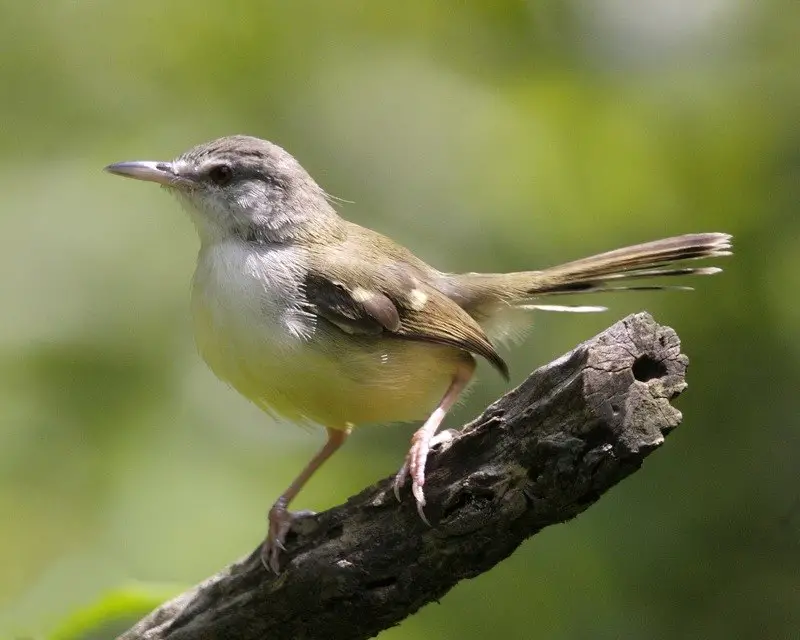
The bar-winged prinia, also known as the bar-winged wren-warbler, is a small bird from the cisticola family. It is approximately 13 centimeters long and weighs between 8 to 10 grams.
This bird species is endemic to Indonesia and can be found on Sumatra’s eastern part, including the islands of Java and Bali. Its distinctiveness is most noticeable by its bar-shaped wings.
The bar-winged prinia is a beautiful bird, but sadly, its population is decreasing due to habitat loss and fragmentation. Conservation efforts are being put in place to protect this unique species for future generations to enjoy.
Scientific classification:
| Kingdom | Animalia |
| Phylum | Chordata |
| Class | Aves |
| Order | Passeriformes |
| Family | Cisticolidae |
| Genus | Prinia |
| Species | P. familiaris |
11. Flame-Fronted Barbet
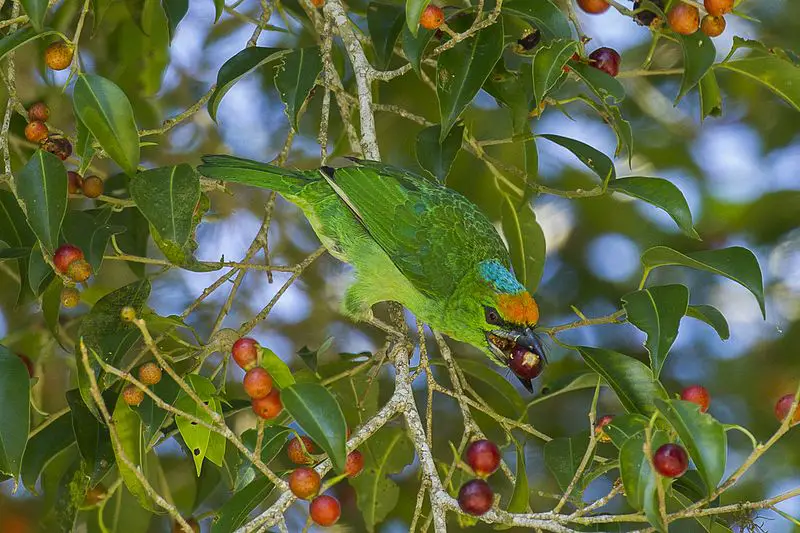
The Flame-fronted barbet is a beautiful bird found in Java and Bali. With its green plumage, orange-yellow forehead, blue nape, and an orange crescent on the chest, it looks unique and attracts attention.
It is a medium-sized bird, measuring around 19.5-23 cm in length and weighing between 61-79 g.
The Flame-fronted barbet prefers to live in subtropical or tropical moist lowland forests and subtropical or tropical moist montane forests, where it can thrive.
These habitats provide the bird with the necessary food and shelter it needs to survive. It is an Asian barbet that is loved for its unique features and beauty. If you ever visit Java or Bali, keep an eye out for this adorable bird.
Scientific classification:
| Kingdom | Animalia |
| Phylum | Chordata |
| Class | Aves |
| Order | Piciformes |
| Family | Megalaimidae |
| Genus | Psilopogon |
| Species | P. armillaris |
12. Orange-Spotted Bulbul
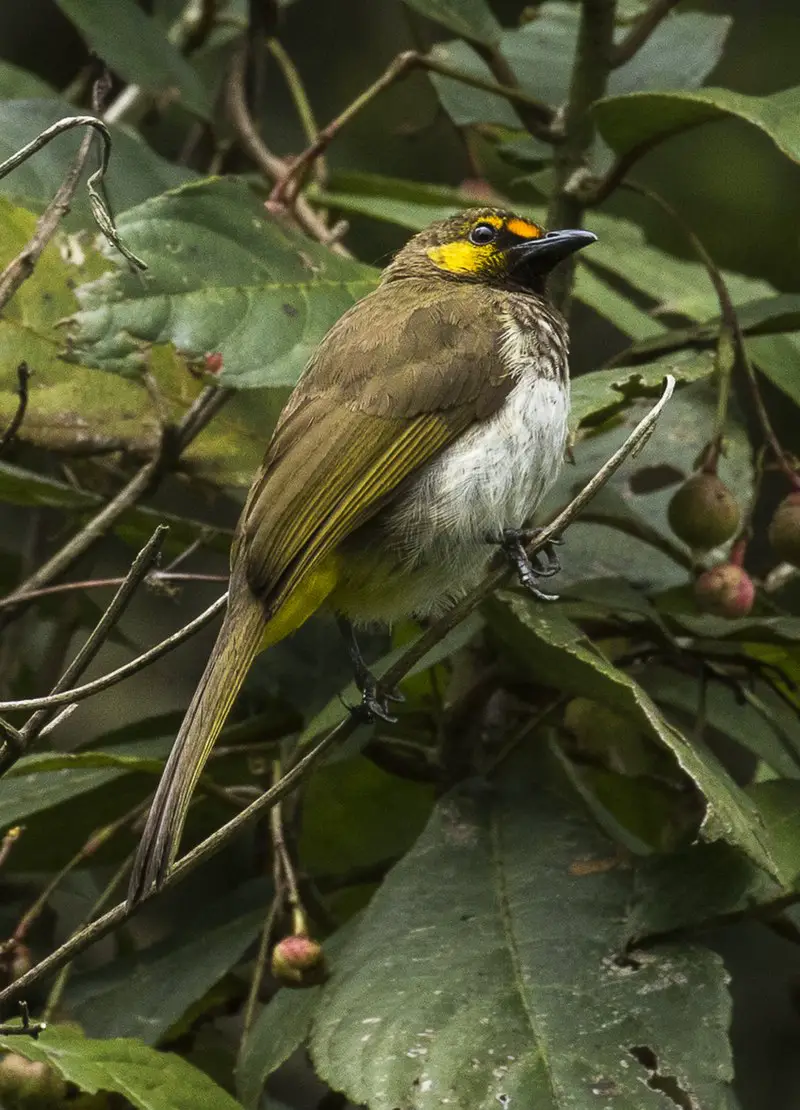
The Orange-spotted bulbul is a beautiful songbird belonging to the bulbul family. It is found only in Java, Bali, and Sumatra. This bird likes living in forest edges and open meadows in montane forests.
It was first classified as a member of the Turdus genus in 1821 by Thomas Horsfield. The Aceh bulbul was previously thought to be a subspecies but has now been recognized as a separate species.
The Orange-spotted bulbul’s attractive appearance and melodious voice make it a favorite among birdwatchers.
Scientific classification:
| Kingdom | Animalia |
| Phylum | Chordata |
| Class | Aves |
| Order | Passeriformes |
| Family | Pycnonotidae |
| Genus | Pycnonotus |
| Species | P. bimaculatus |
13. Crescent-Chested Babbler
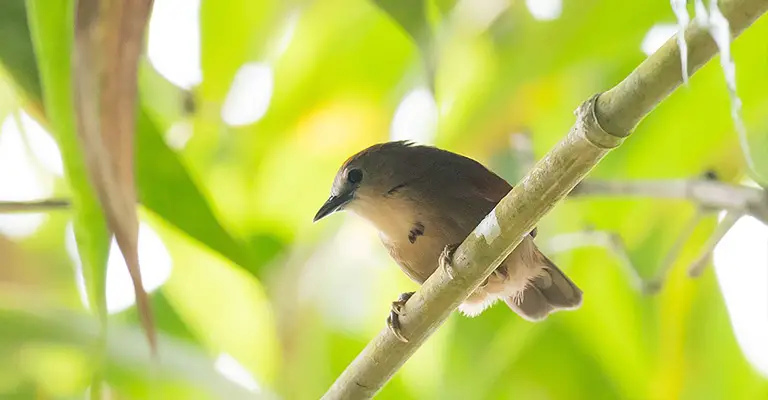
The Crescent-chested babbler bird is a species native to Indonesia, specifically found in Java and Bali. It lives in subtropical or tropical moist lowland forests, as well as montane forests and shrublands.
This bird is colored in ochreous-brown, with rufous-colored wings, lighter underparts, and a distinguishing black crescent on its chest. Despite threats to its habitat, it is categorized as Least Concern by the IUCN Red List.
Scientific classification:
| Kingdom | Animalia |
| Phylum | Chordata |
| Class | Aves |
| Order | Passeriformes |
| Family | Timaliidae |
| Genus | Cyanoderma |
| Species | C. melanothorax |
14. Javan Owlet
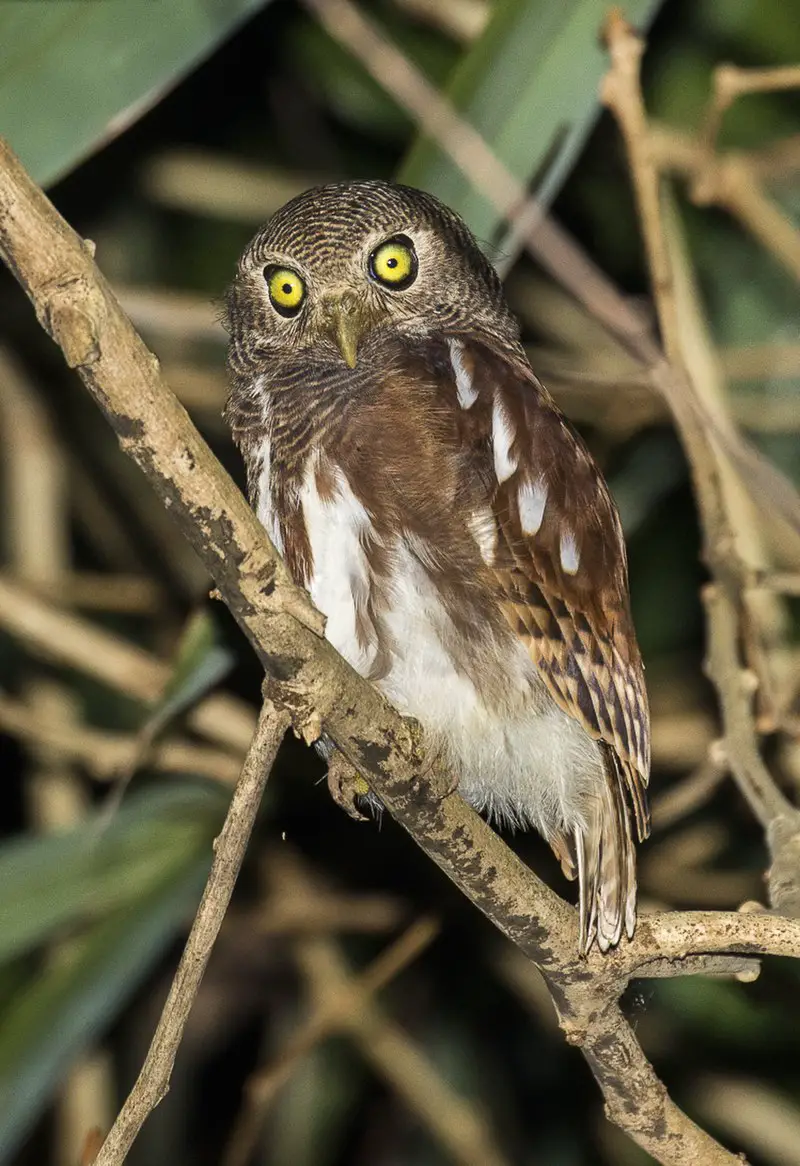
The Javan owlet is a type of owl belonging to the Strigidae family. This bird species can be found in the subtropical or tropical moist lowland forests of the islands of Java and Bali.
This owl has distinctive chestnut-brown colored wings, which make it easy to identify. Its habitat is its natural home, where it builds nests and raises its young.
This little owl is well adapted to the environment it lives in, and it hunts at night for its food.
Its diet includes insects and other small prey. Due to habitat loss and fragmentation, however, the Javan owlet is considered vulnerable and in danger of becoming extinct.
Therefore, conservation efforts are crucial to protect this beautiful bird species for future generations.
Scientific classification:
| Kingdom | Animalia |
| Phylum | Chordata |
| Class | Aves |
| Order | Strigiformes |
| Family | Strigidae |
| Genus | Glaucidium |
| Species | G. castanopterum |
15. Yellow-Throated Hanging Parrot
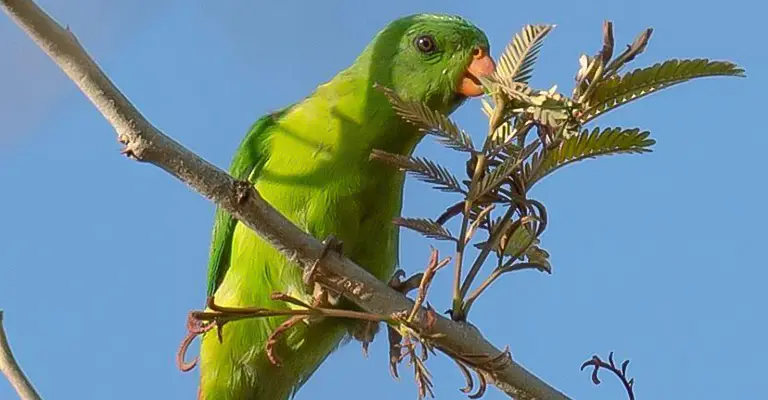
The Yellow-throated hanging parrot is a petite bird belonging to the psittaculidae family, exclusive to the Indonesian islands of Bali and Java. It thrives in forests and surrounding areas, but its habitat is rapidly degrading.
This diminutive species is currently facing a bleak future due to habitat loss, which poses a significant threat to its existence.
Despite its small size, this charming bird is an awe-inspiring sight to see. It is endowed with enchanting hues and a yellow throat that makes it distinct from other birds.
The Yellow-throated hanging parrot is sometimes kept as a pet, and it is essential to remember that their wild populations need to be protected to sustain their existence.
Scientific classification:
| Kingdom | Animalia |
| Phylum | Chordata |
| Class | Aves |
| Order | Psittaciformes |
| Family | Psittaculidae |
| Genus | Loriculus |
| Species | L. pusillus |
16. Dark-Backed Imperial Pigeon
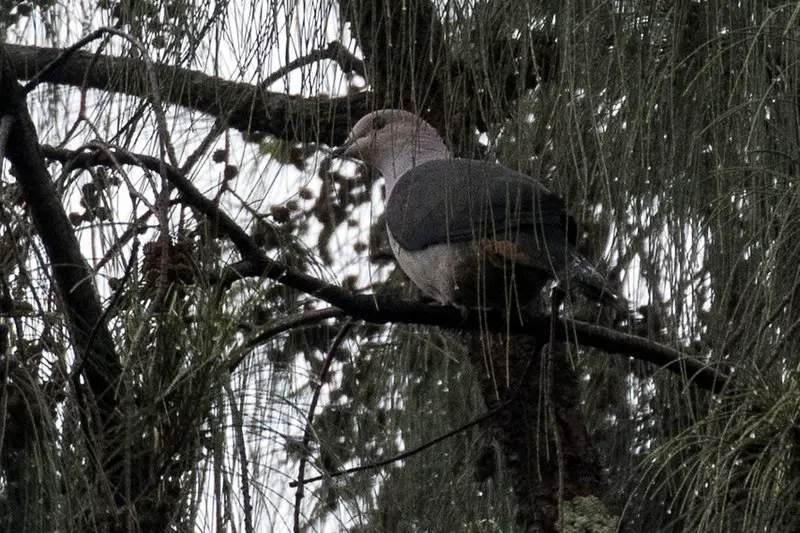
The Dark-backed imperial pigeon is a unique bird species belonging to the family Columbidae. It can only be found in the Lesser Sunda Islands.
This bird species prefers subtropical or tropical moist lowland forests and subtropical or tropical moist montane forests as their natural habitats.
They are known to have dark-colored backs and are commonly referred to as the Dark-backed imperial pigeon.
This bird species has a distinct appearance and is considered an excellent example of biodiversity in the islands.
Their unique habitat preferences and limited distribution make them an important species to protect.
Although not much is known about their behavior or ecology, the Dark-backed imperial pigeon serves as a reminder of the incredible diversity of species present in our world.
Scientific classification:
| Kingdom | Animalia |
| Phylum | Chordata |
| Class | Aves |
| Order | Columbiformes |
| Family | Columbidae |
| Genus | Ducula |
| Species | D. lacernulata |
Also Featured In: Common Birds of Lombok,
17. Sumatran Green Pigeon
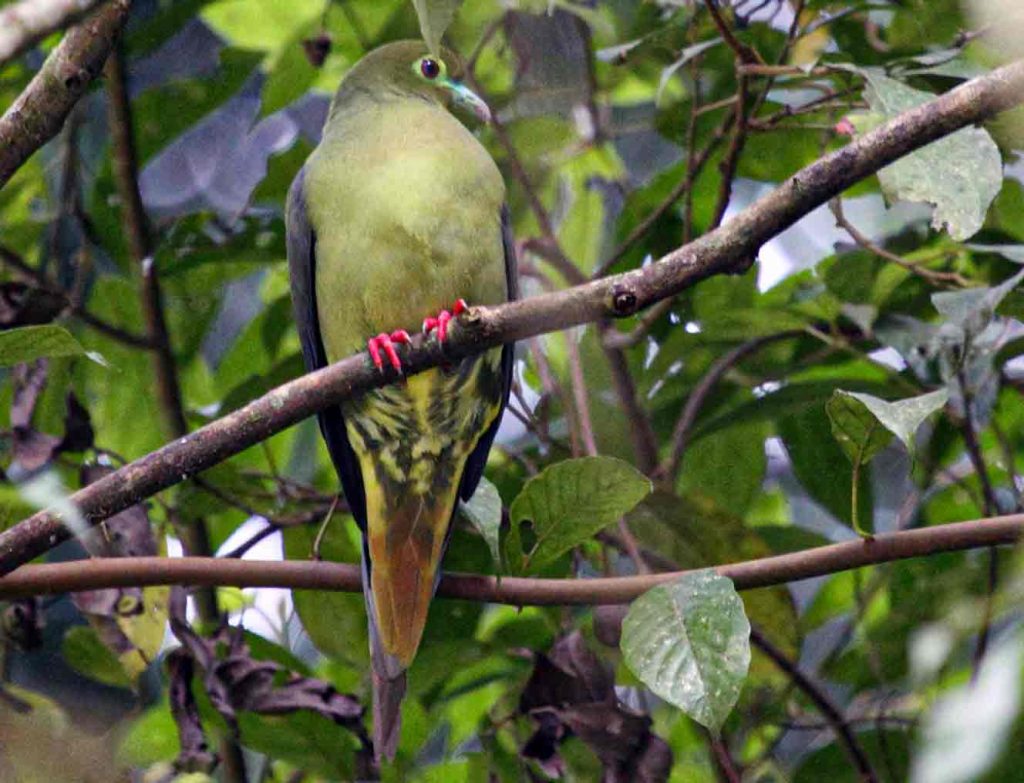
The Sumatran green pigeon is a bird that belongs to the Columbidae family, and it can only be found in Indonesia, specifically in Sumatra and western Java.
This magnificent bird inhabits subtropical or tropical moist lowland forests and subtropical or tropical moist montane forests.
Unfortunately, this species is facing a serious threat due to the loss of its natural habitat caused by human activities.
Nonetheless, its beauty and ecological relevance make it a valuable member of the avian fauna in the region.
The Sumatran green pigeon is cherished for its emerald-green feathers, inspiring wonder and awe to those who witness it in the wild.
Its conservation status remains a priority to protect it from potential extinction, and it reminds us of the importance of preserving natural habitats for biodiversity conservation.
Scientific classification:
| Kingdom | Animalia |
| Phylum | Chordata |
| Class | Aves |
| Order | Columbiformes |
| Family | Columbidae |
| Genus | Treron |
| Species | T. oxyurus |
18. Brown-Throated Barbet
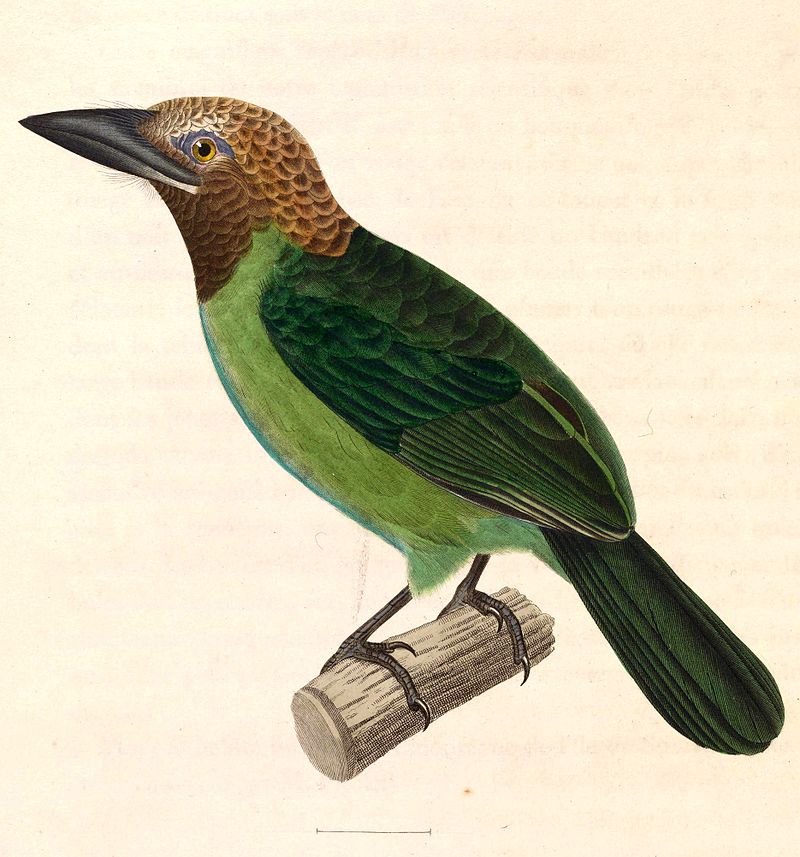
The Brown-throated barbet is a bird species that belongs to the Megalaimidae family. It is only found in western Java and can be recognized by its distinct brown throat.
This bird prefers to inhabit subtropical or tropical moist lowland forests and montane forests. It has a unique vocalization that consists of high-pitched hoots and low-pitched growls.
The Brown-throated barbet feeds on fruits, insects, and small reptiles. They are active during the morning and evening and can often be seen perched on tree branches. Due to habitat loss and fragmentation, the population of this species is declining.
Conservation efforts are necessary to ensure the survival of this magnificent bird.
Scientific classification:
| Kingdom | Animalia |
| Phylum | Chordata |
| Class | Aves |
| Order | Piciformes |
| Family | Megalaimidae |
| Genus | Psilopogon |
| Species | P. corvinus |
19. Black-Banded Barbet
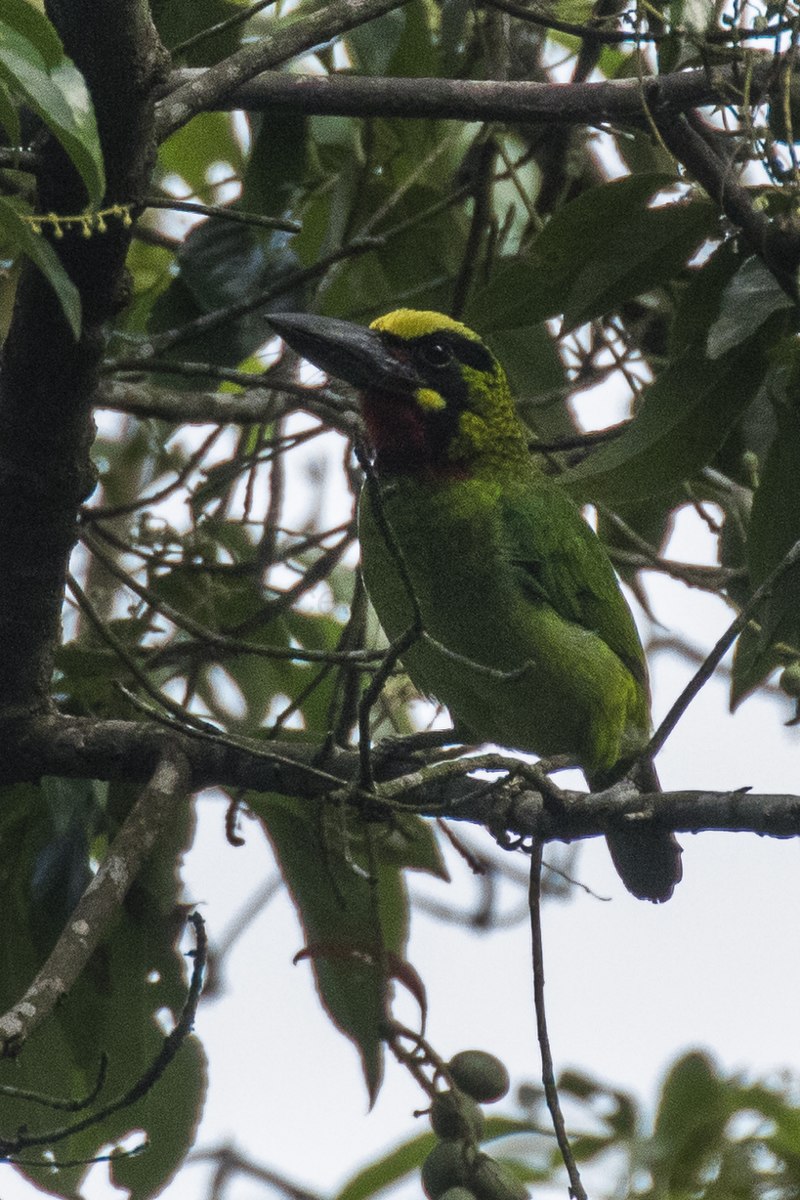
The Black-banded barbet is a bird species found only in Java and Bali. It is a member of the Megalaimidae family and is threatened by habitat loss.
This bird lives in subtropical or tropical moist lowland forests and subtropical or tropical moist montane forests.
It has distinctive black bands on its white face and a black spot on its yellow-green breast. Its diet consists of fruits and insects, and it is known for its distinctive call, which sounds like “tuk-tuk-tuk-tuk”.
Unfortunately, due to deforestation and habitat destruction, the Black-banded barbet’s population has been declining.
Conservation efforts are underway to try and protect and preserve this beautiful bird species before it disappears forever.
Scientific classification:
| Kingdom | Animalia |
| Phylum | Chordata |
| Class | Aves |
| Order | Piciformes |
| Family | Megalaimidae |
| Genus | Psilopogon |
| Species | P. javensis |
20. Rufous-Tailed Fantail
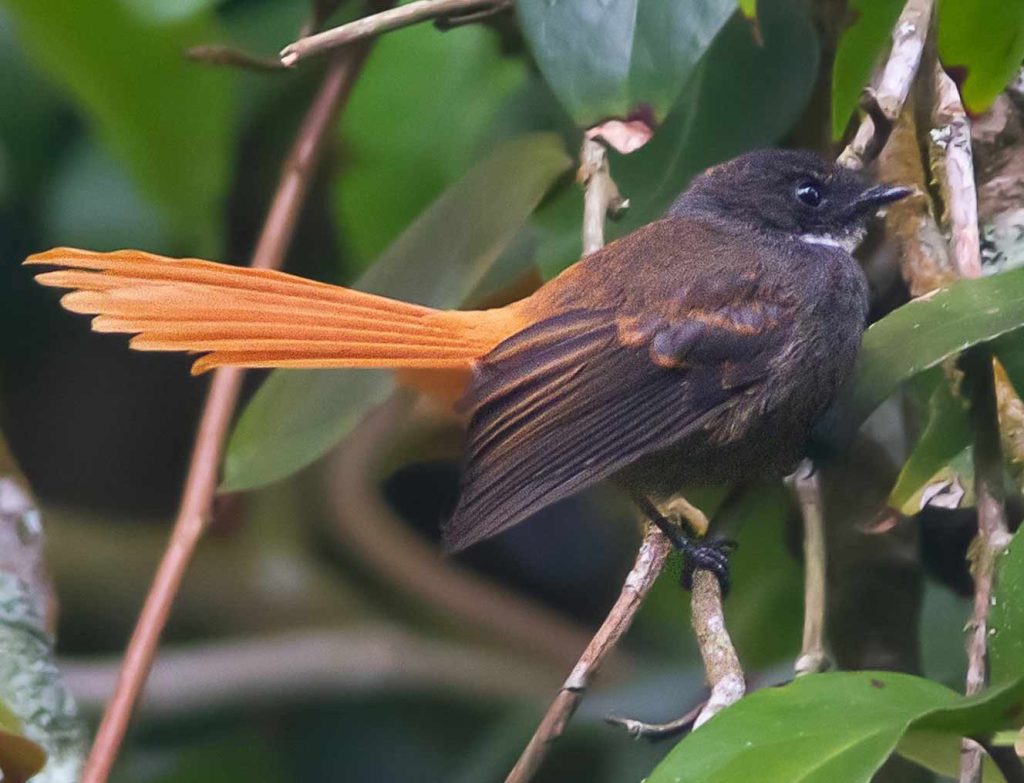
The Rufous-tailed fantail is an Indonesian bird that belongs to the family Rhipiduridae. This small bird is native to the island of Java and is known for its distinctive rufous-colored tail feathers.
The bird is typically found in subtropical or tropical moist montane forests. Its natural habitat provides a perfect place for the bird to perch and hunt insects.
The Rufous-tailed fantail has a unique movement pattern when it flies, often twisting and turning in a highly acrobatic way.
This is an incredible sight to see for bird lovers. While the bird is endemic to Java, its vivid colors and unique flight pattern are worth studying for anyone interested in birds.
Scientific classification:
| Kingdom | Animalia |
| Phylum | Chordata |
| Class | Aves |
| Order | Passeriformes |
| Family | Rhipiduridae |
| Genus | Rhipidura |
| Species | R. phoenicura |
21. Javan Cuckooshrike
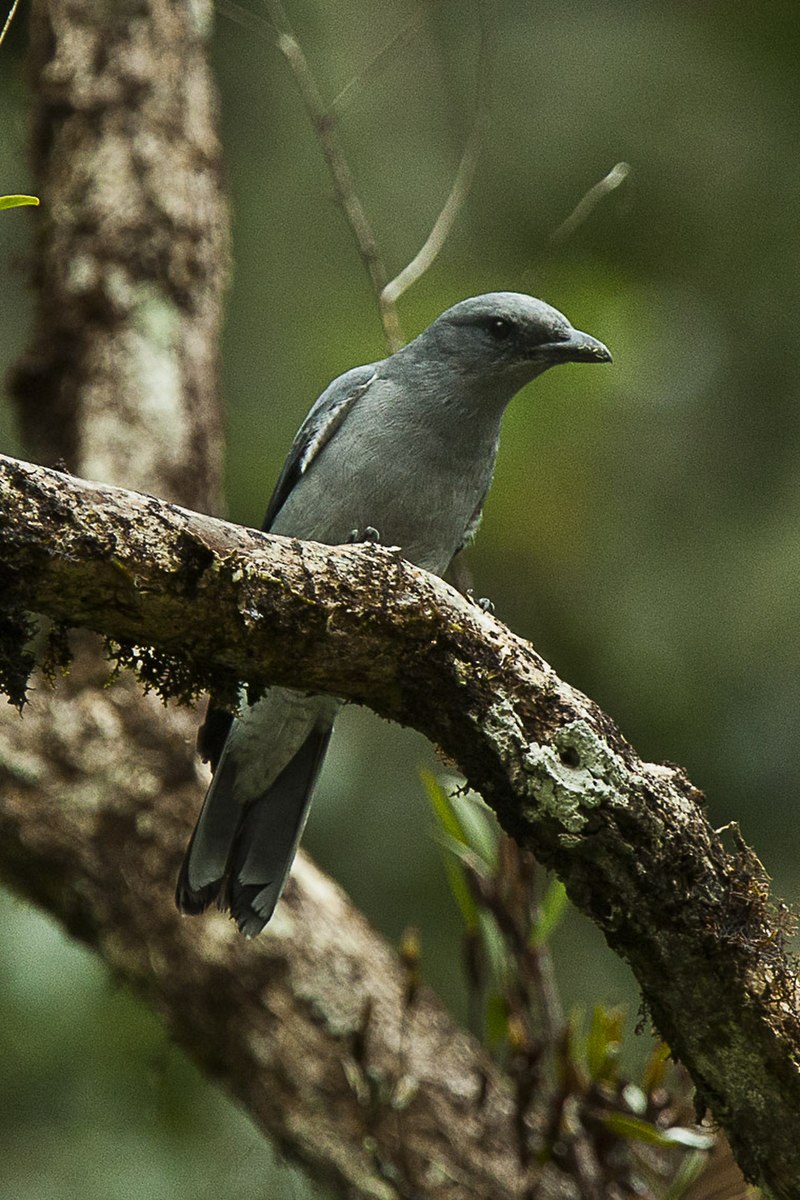
The Javan cuckooshrike bird is found exclusively on the island of Java in Indonesia. This species of bird belongs to the Campephagidae family and inhabits subtropical or tropical moist lowland forests.
With its distinctive appearance and unique behavior, the Javan cuckooshrike is a fascinating bird to observe in its natural habitat.
Despite being endemic to Java, this beautiful bird can be easily identified due to its striking plumage and vocalizations.
The Javan cuckooshrike is an important part of the ecosystem and plays a significant role in maintaining the balance of nature in the region.
With their beautiful melodies and stunning feathers, these birds are sought after by birdwatchers and nature enthusiasts alike.
Scientific classification:
| Kingdom | Animalia |
| Phylum | Chordata |
| Class | Aves |
| Order | Passeriformes |
| Family | Campephagidae |
| Genus | Coracina |
| Species | C. javensis |
22. Pied Shrike-Babbler
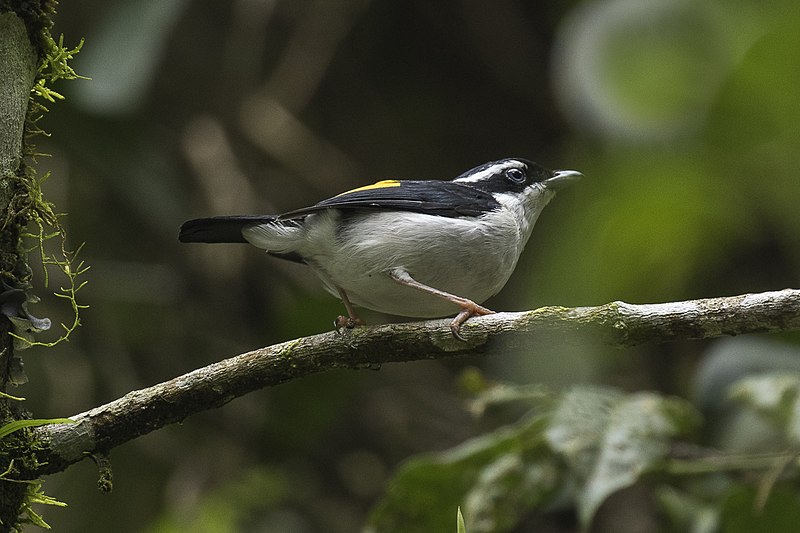
The pied shrike-babbler is a unique bird species that was traditionally considered to be part of the Timaliidae family. However, recent research has suggested that it may actually belong in the Vireonidae family.
Its habits resemble those of vireos, which has led to the hypothesis that the pied shrike-babbler may be an Asian offshoot of American vireos. This bird is known for its distinctive black and white coloring, with a yellow cap atop its head.
Despite its name, it is not actually a shrike, but rather a babbler. The pied shrike-babbler can be found in the forests of the Himalayas and Southeast Asia, where it feeds on insects and small fruits.
While more research is needed to determine its exact classification, the pied shrike-babbler remains a fascinating bird species for ornithologists and bird enthusiasts alike.
Scientific classification:
| Kingdom | Animalia |
| Phylum | Chordata |
| Class | Aves |
| Order | Passeriformes |
| Family | Vireonidae |
| Genus | Pteruthius |
| Species | P. flaviscapis |
23. Jambu Fruit Dove
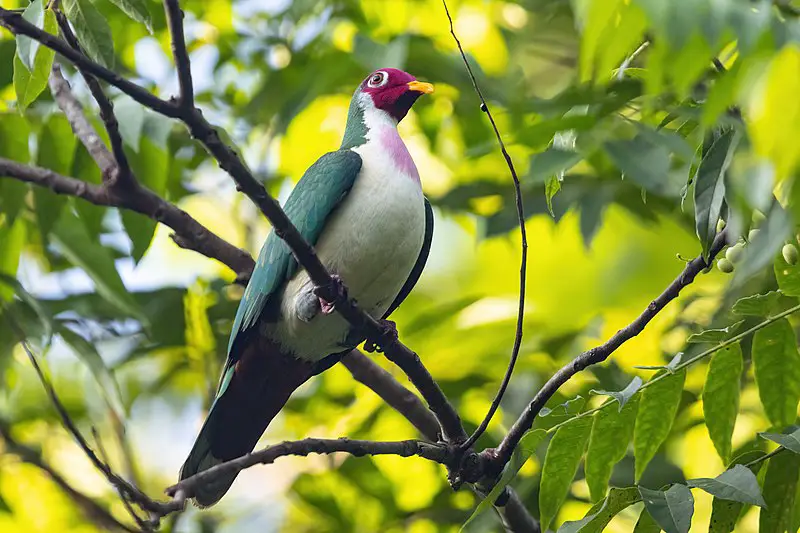
The Jambu fruit dove is a brightly colored bird that is native to Southern Thailand, Malaysia, Brunei, and Indonesian islands.
It is a small bird that primarily feeds on fruits, and its feathers are predominantly green with a reddish-pink crown and breast.
The bird was first described by Johann Friedrich Gmelin in 1789 in his revised edition of Carl Linnaeus’s Systema Naturae. It is a resident breeding species that breeds in the mentioned regions.
Although small in size, the Jambu fruit dove is an important part of the ecosystem, helping to disperse the seeds of the fruits it consumes.
Scientific classification:
| Kingdom | Animalia |
| Phylum | Chordata |
| Class | Aves |
| Order | Columbiformes |
| Family | Columbidae |
| Genus | Ptilinopus |
| Species | P. jambu |
24. Javan Green Magpie
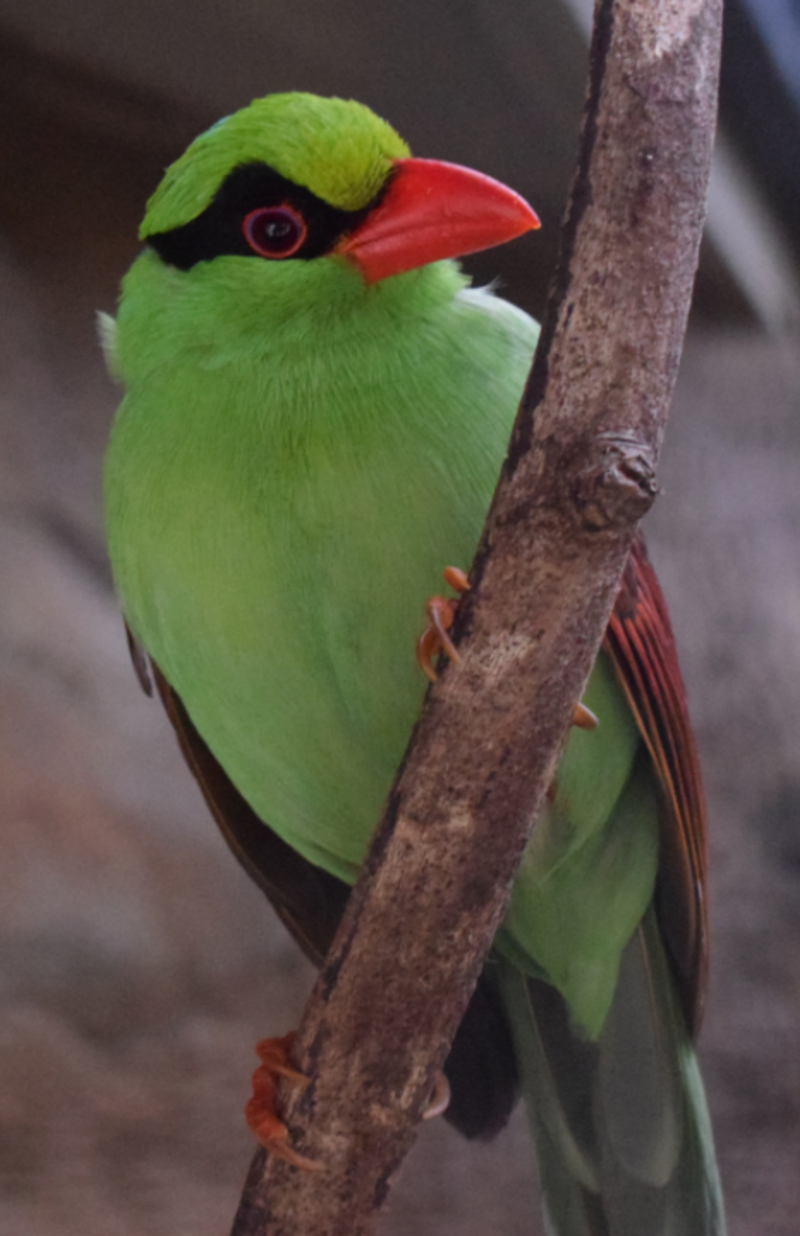
The Javan green magpie is a species of bird found in the montane forests of Java. It belongs to the crow family and is currently facing critical endangerment.
The bright green color of their plumage comes from the yellow pigment. The bird was previously considered to be a subspecies of the Bornean green magpie, and the combined species was known as the short-tailed magpie.
Despite being a beautiful species of bird, the Javan green magpie is under threat due to habitat loss and degradation.
This underscores the importance of conservation efforts, particularly in preserving the natural habitat of the bird.
Without urgent action, this bird species may soon join the growing list of extinct animals.
Scientific classification:
| Kingdom | Animalia |
| Phylum | Chordata |
| Class | Aves |
| Order | Passeriformes |
| Family | Corvidae |
| Genus | Cissa |
| Species | C. thalassina |
25. Javan Lapwing
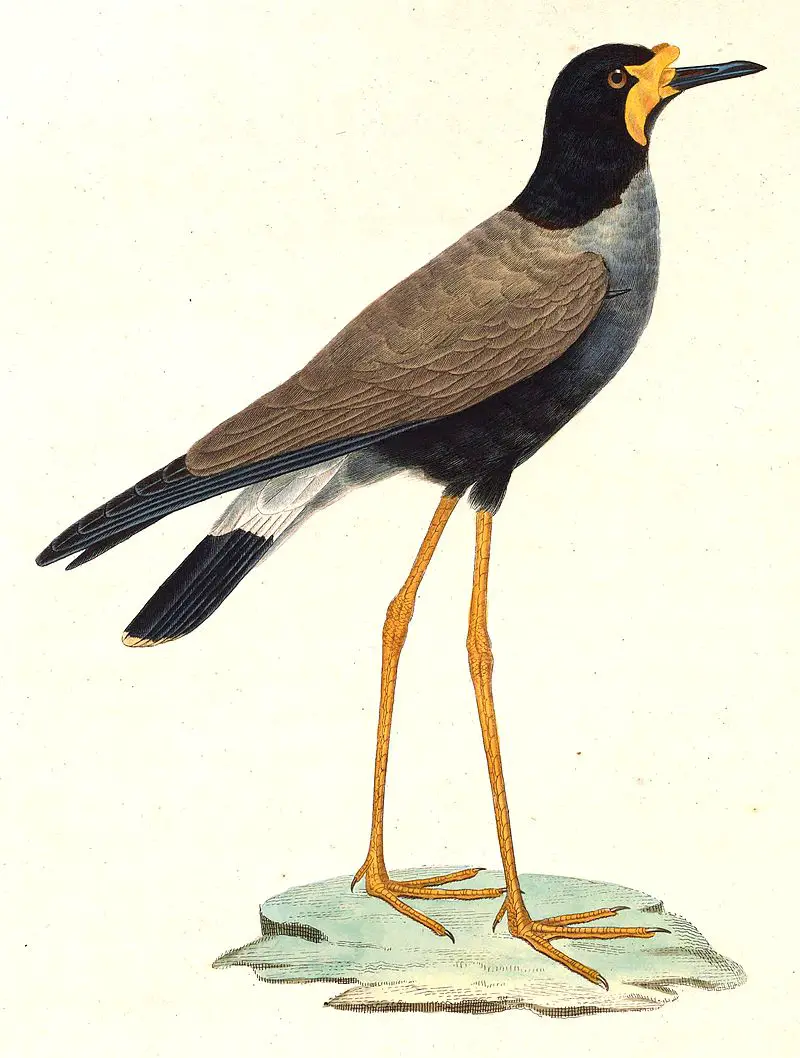
The Javan lapwing, also referred to as the Javanese lapwing, was a member of the lapwing family that lived in marshes and river deltas in Java, as well as possibly Sumatra and Timor.
With its long legs and large size, this wader was easy to spot. Unfortunately, the species hasn’t been seen since 1940 and is believed to be extinct.
The International Union for Conservation of Nature (IUCN) has classified the Javan lapwing as extinct, likely due to habitat loss and hunting.
The loss of this species is a reminder of the importance of conservation efforts to protect and preserve wildlife.
Scientific classification:
| Kingdom | Animalia |
| Phylum | Chordata |
| Class | Aves |
| Order | Charadriiformes |
| Family | Charadriidae |
| Genus | Vanellus |
| Species | V. macropterus |
26. Javan Woodcock
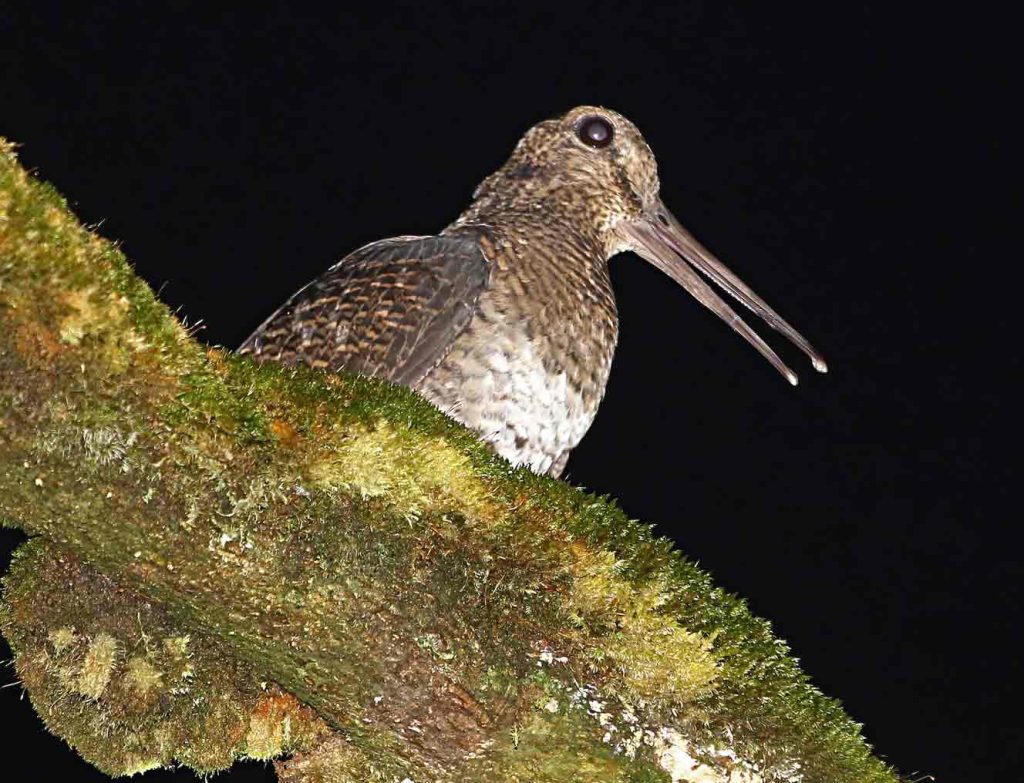
The Javan woodcock, also known as the rufous woodcock, is a wader found in the wet mountain forests of Sumatra and western Java. It nests in light undergrowth, making its bed on a bed of moss.
Similar to the Eurasian woodcock, it performs a “roding” display flight, though with its own unique call.
The Javan woodcock is notably smaller than the Eurasian woodcock and has dark plumage.
In the past, it was grouped with the New Guinean woodcock, but is now considered a separate and distinctive species.
Despite its habitat being threatened by human activity and deforestation, the Javan woodcock has not yet been designated as a species of conservation concern.
Scientific classification:
| Kingdom | Animalia |
| Phylum | Chordata |
| Class | Aves |
| Order | Charadriiformes |
| Family | Scolopacidae |
| Genus | Scolopax |
| Species | S. saturata |
27. Salvadori’s Nightjar
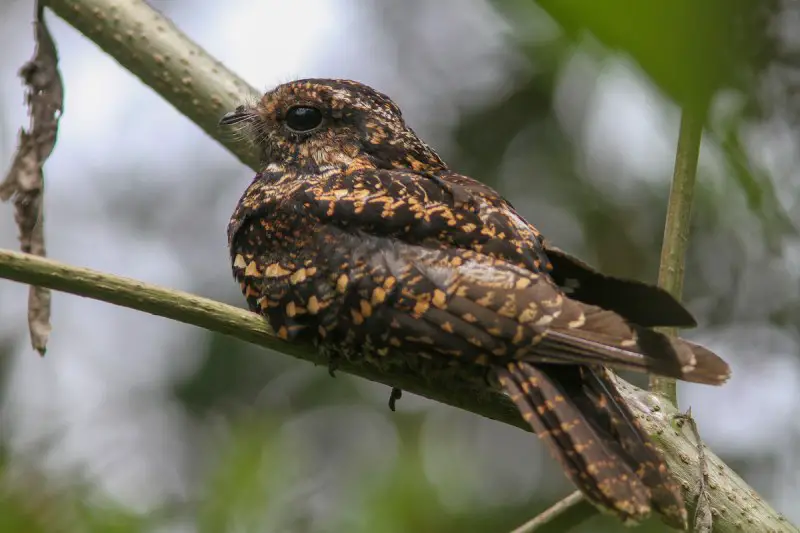
Salvadori’s nightjar, a species of nightjar from the family Caprimulgidae, is found only in Indonesia, specifically in the islands of Sumatra and Java. Its habitats include subtropical or tropical moist lowland and montane forests.
Unfortunately, the bird is currently at risk of habitat loss due to deforestation. Despite its threatened status, it remains an important member of its ecosystem, helping to control populations of insects during the night.
The bird’s physical characteristics are not mentioned in the given information, but it is safe to assume that it shares the same general features as other nightjar species, with a cryptic plumage used to camouflage itself during the day and large, wide mouths used for catching insects at night.
Scientific classification:
| Kingdom | Animalia |
| Phylum | Chordata |
| Class | Aves |
| Clade | Strisores |
| Order | Caprimulgiformes |
| Family | Caprimulgidae |
| Genus | Caprimulgus |
| Species | C. pulchellus |
28. Javan Plover
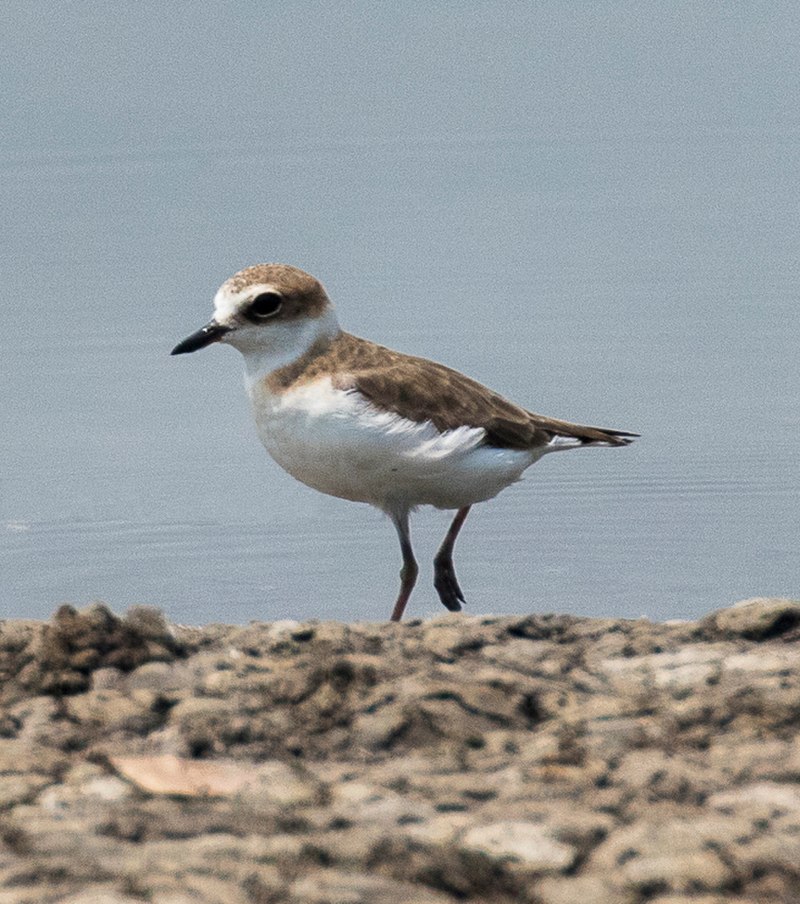
The Javan plover is a bird species from Indonesia found in sandy shores and intertidal mudflats. It is endangered due to habitat loss but it is listed as Least concern on the IUCN Red List.
This bird belongs to the Charadriidae family and is endemic to Indonesia.
Scientific classification:
| Kingdom | Animalia |
| Phylum | Chordata |
| Class | Aves |
| Order | Charadriiformes |
| Family | Charadriidae |
| Genus | Charadrius |
| Species | C. javanicus |
29. Javan White-Eye
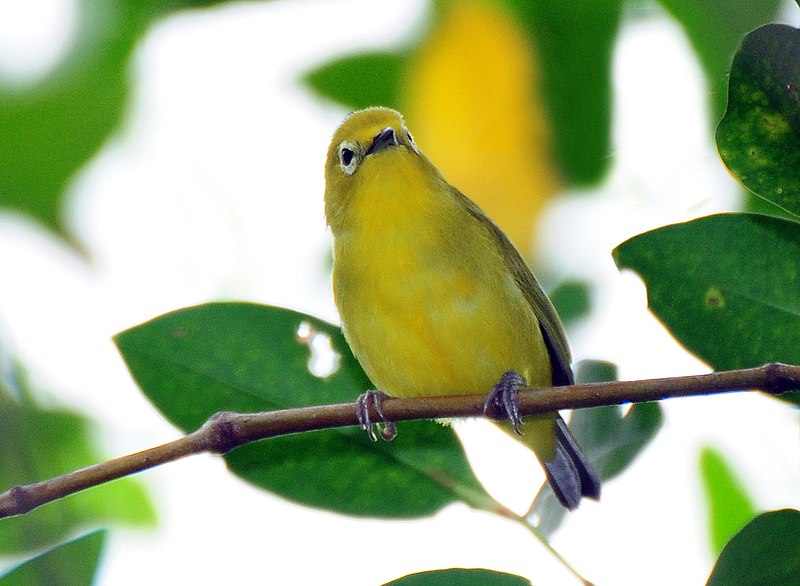
The Javan white-eye bird is a species of bird found in Java and Borneo. Unfortunately, the bird is at risk due to trapping for wildlife trade and has been categorized as Endangered on the IUCN Red List as its population has declined significantly.
Despite this, the bird has been sighted in various areas in West Java between 1984 and 1985 such as Pulau Dua, Muara Gembong, and Tanjung Sedari.
The Javan white-eye belongs to the Zosteropidae family and is known for its distinct white eye-ring. It is a small, colorful bird that mostly feeds on insects and fruits.
Efforts are being made to conserve this species and prevent any further decline in their population.
Scientific classification:
| Kingdom | Animalia |
| Phylum | Chordata |
| Class | Aves |
| Order | Passeriformes |
| Family | Zosteropidae |
| Genus | Zosterops |
| Species | Z. flavus |
30. Javan Blue-Banded Kingfisher
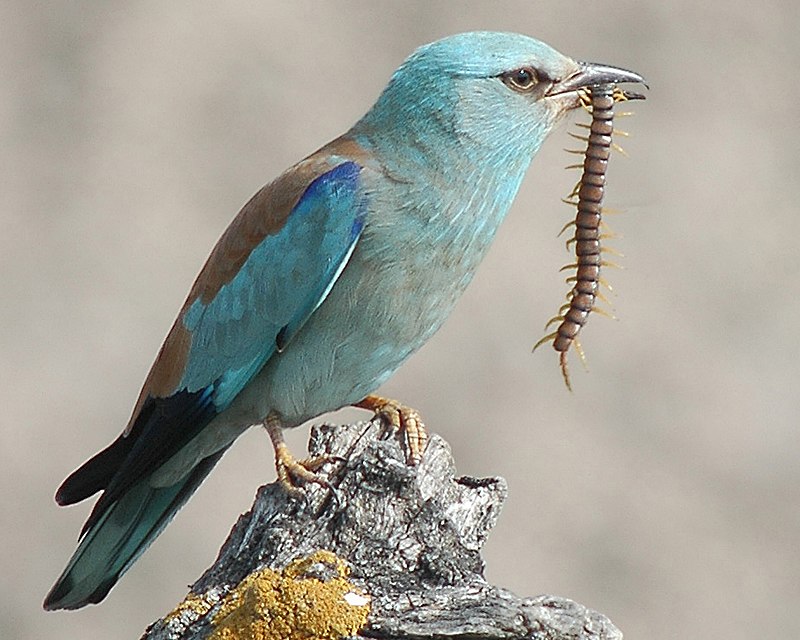
The Javan blue-banded kingfisher is a small bird found in subtropical or tropical forests and mangroves. It is known for its distinctive appearance, with the male sporting a broad blue-green band across a white chest.
The female, on the other hand, has an entirely orange belly. This kingfisher species feeds on fish and other small aquatic animals, using its sharp beak to catch them.
Due to habitat destruction and human activity, the Javan blue-banded kingfisher is considered vulnerable and its population has been decreasing.
Efforts are being made to protect their habitats and prevent further decline in their numbers.
Scientific classification:
| Kingdom | Animalia |
| Phylum | Chordata |
| Class | Aves |
| Order | Coraciiformes |
| Family | Alcedinidae |
| Subfamily | Alcedininae |
| Genus | Alcedo |
| Species | A. euryzona |
31. Javan Tesia
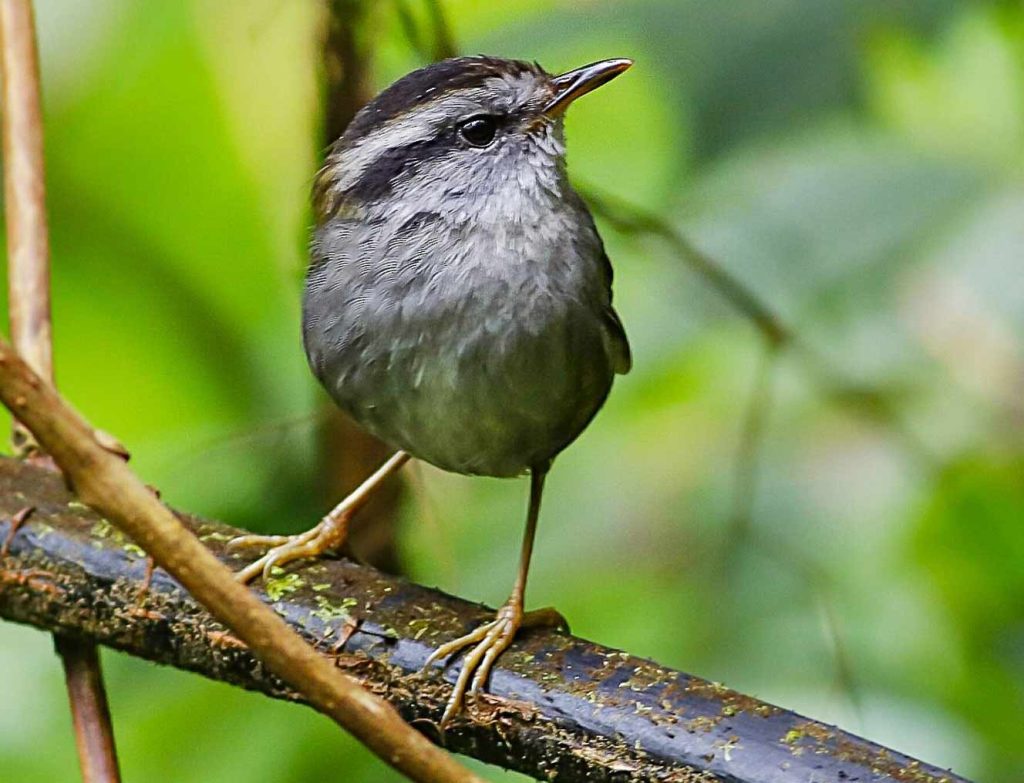
The Javan tesia is a tiny bird found exclusively in Java, Indonesia. It belongs to the family of Old World warblers, known as Cettiidae. With long legs and no visible tail, this small tesia stands out due to its unique characteristics.
Their diet primarily consists of insects found in the undergrowth of broadleaf forests, where they wander around in search of their prey.
They are one of the best-studied species of tesias, providing vital information to scientists and researchers worldwide.
Hence, this little bird plays an essential role in the ecosystem of Java’s biodiversity. Its existence is essential for maintaining the balance of nature and preserving the flora and fauna of the region.
Scientific classification:
| Kingdom | Animalia |
| Phylum | Chordata |
| Class | Aves |
| Order | Passeriformes |
| Family | Cettiidae |
| Genus | Tesia |
| Species | T. superciliaris |
32. Javan Banded Pitta
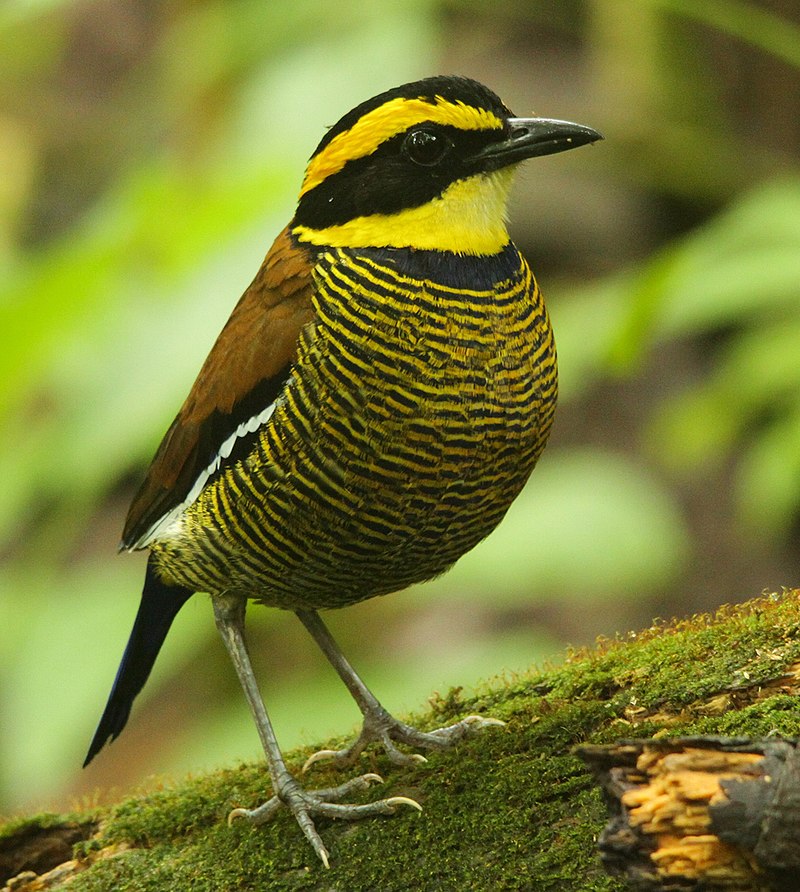
The Javan banded pitta is a member of the Pittidae family and is native to the islands of Java and Bali.
It was once believed to be the same as the Bornean and Malayan banded pittas, referred to as the banded pitta as a whole.
This bird has a distinct banded appearance, with colorful plumage and a sleek body. It is often found in dense forests and can be difficult to spot due to its shy nature.
The Javan banded pitta is known for its beautiful and varied songs, making it a popular bird among enthusiasts.
Unfortunately, like many forest-dwelling species, this bird is threatened by habitat loss and degradation.
Conservation efforts are necessary to protect these beautiful creatures and ensure their survival for generations to come.
Scientific classification:
| Kingdom | Animalia |
| Phylum | Chordata |
| Class | Aves |
| Order | Passeriformes |
| Family | Pittidae |
| Genus | Hydrornis |
| Species | H. guajanus |
33. Javan Bulbul
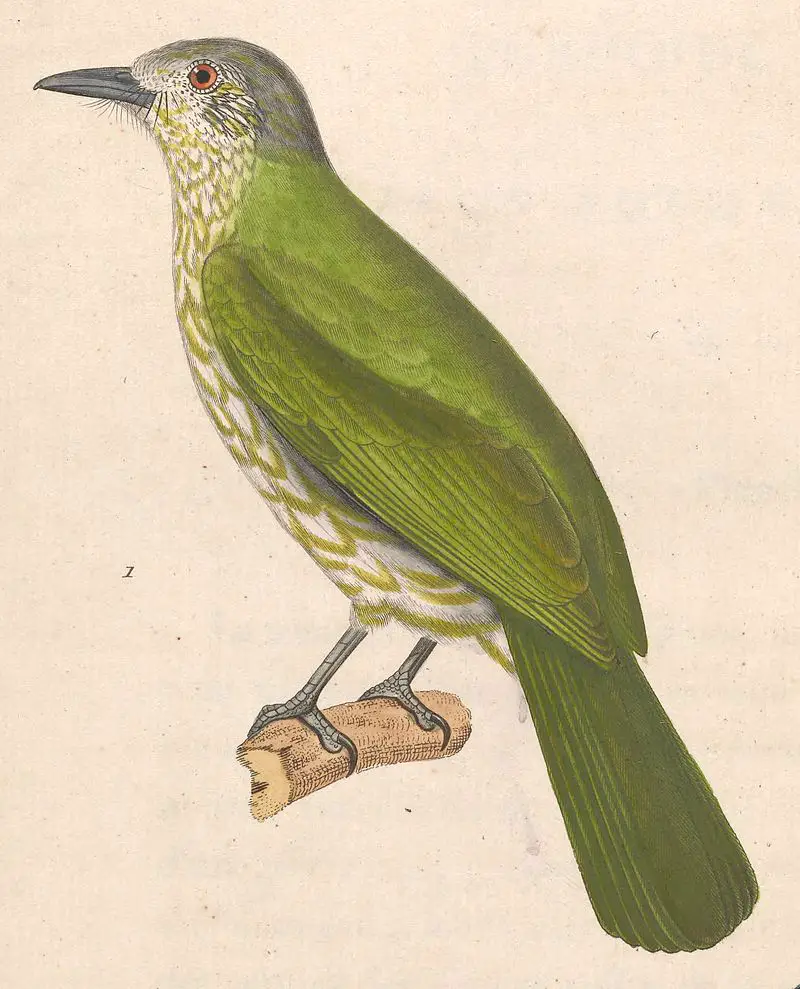
The Javan bulbul is a type of songbird found only in the montane forests of Java, Indonesia. It is the namesake species of the Ixos genus, and is not currently endangered.
Though sometimes classified differently, it is officially part of the bulbul family.
Scientific classification:
| Kingdom | Animalia |
| Phylum | Chordata |
| Class | Aves |
| Order | Passeriformes |
| Family | Pycnonotidae |
| Genus | Ixos |
| Species | I. virescens |
34. Sunda Minivet
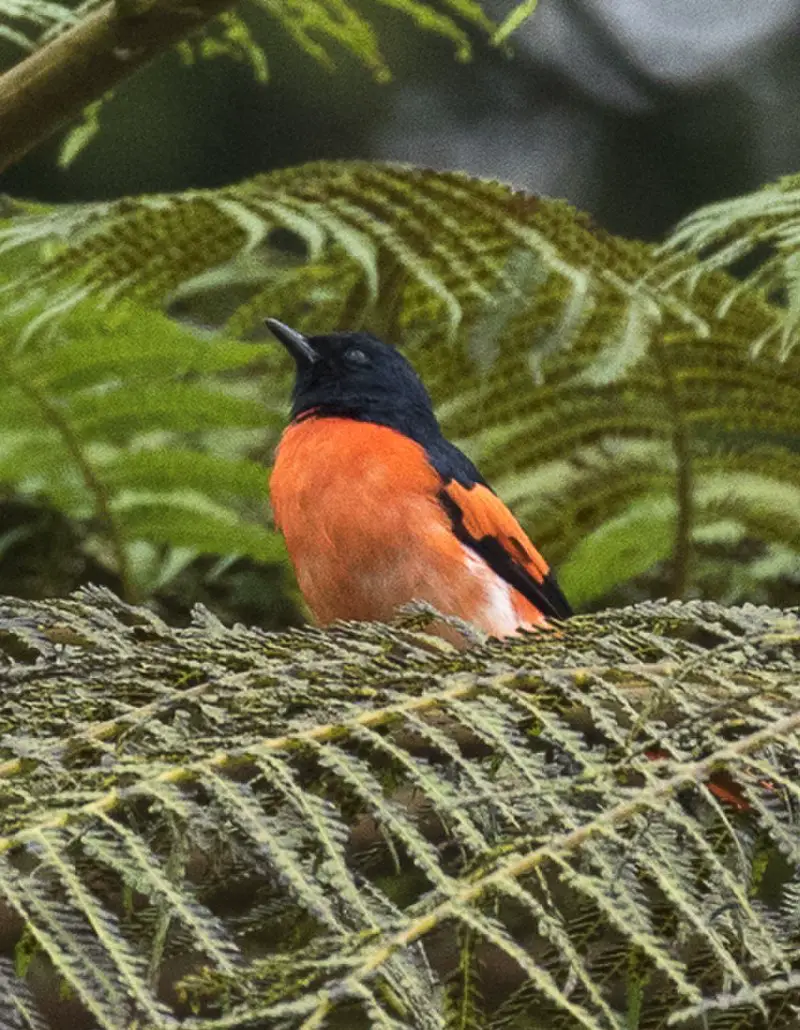
The Sunda minivet bird, a member of the Campephagidae family, can only be found in Indonesia on the islands of Sumatra and Java. It is a colorful bird species with a red head, black wings, and a bright orange body.
The males and females have different colorations, with the females having more muted colors. These birds are known for their melodious singing voices and are often found in the forest canopy, where they feed on insects and small fruits.
The Sunda minivet plays an important role in the ecosystem as a predator of insects, helping to control insect populations.
Despite being endemic to Indonesia, they face threats due to habitat loss and degradation as a result of deforestation and human activities.
Conservation efforts are needed to protect these beautiful birds and preserve their habitat.
Scientific classification:
| Kingdom | Animalia |
| Phylum | Chordata |
| Class | Aves |
| Order | Passeriformes |
| Family | Campephagidae |
| Genus | Pericrocotus |
| Species | P. miniatus |
35. Olive-Backed Tailorbird
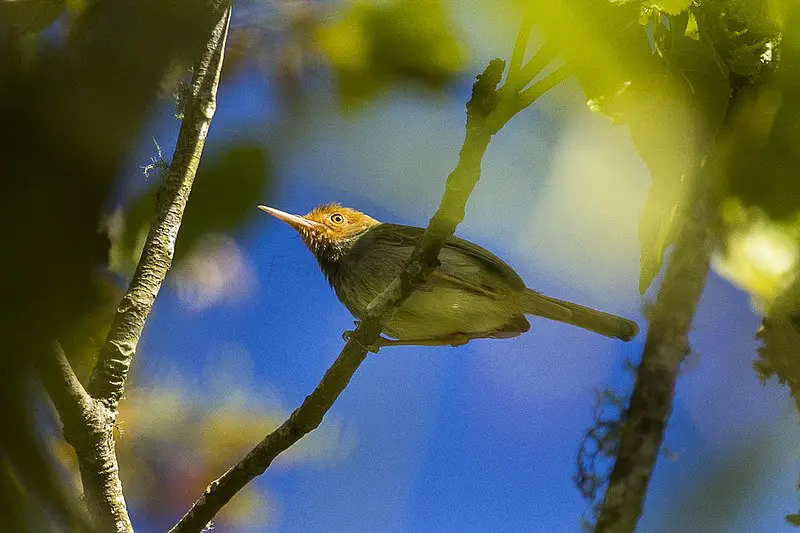
The olive-backed tailorbird is a small passerine bird found only on a few islands in Indonesia, including Java, Madura Island, Bali, and Lombok.
Although once classified as an “Old World warbler,” it is now considered part of the Cisticolidae family.
This bird is known for its bright green back and white belly, as well as its unique ability to sew leaves together to create nests. Its small size and elusive nature make it a difficult bird to spot in the wild.
Despite being relatively unknown, the olive-backed tailorbird plays an important role in its ecosystem as a seed disperser and insect-eater.
Habitat destruction and fragmentation pose a threat to the survival of this species, making conservation efforts crucial for its continued existence.
Scientific classification:
| Kingdom | Animalia |
| Phylum | Chordata |
| Class | Aves |
| Order | Passeriformes |
| Family | Cisticolidae |
| Genus | Orthotomus |
| Species | O. sepium |
36. Sunda Coucal
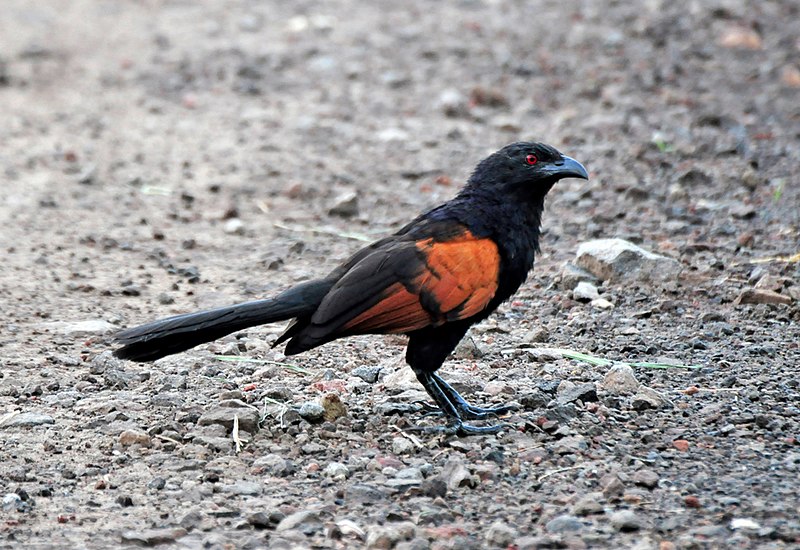
The Sunda coucal, a cuckoo species found in Java, Indonesia, is a bird that faces the threat of extinction due to habitat destruction and trapping. This bird is listed as Vulnerable on the IUCN Red List, and its population is small.
The Sunda coucal can be found in mangroves, freshwater swamp forests, and grasslands near brackish water.
It feeds on insects such as grasshoppers, ground beetles, and moths. Its black and rufous plumage makes it a beautiful bird to observe and appreciate.
Conservation efforts are necessary to preserve the habitat of the Sunda coucal and prevent the loss of this species from the world.
Scientific classification:
| Kingdom | Animalia |
| Phylum | Chordata |
| Class | Aves |
| Order | Cuculiformes |
| Family | Cuculidae |
| Genus | Centropus |
| Species | C. nigrorufus |
37. White-Bellied Fantail
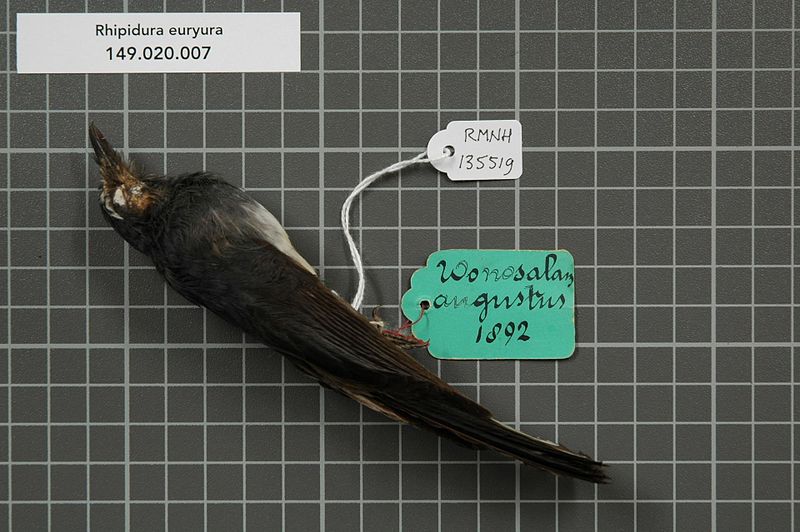
The White-bellied fantail bird is a distinct species belonging to the Rhipiduridae family. A native of the island of Java, it can be found living in subtropical and tropical moist mountains forests.
This bird is characterized by its unique white belly and has a scientific name, Rhipidura euryura. It is endemic to this region, and it’s a small-sized bird that can be easily recognized by its fantail feathers.
The White-bellied fantail bird is a lovely little creature and is a beauty to observe in its natural habitat. It is known to be active and can be spotted making quick movements through the forests.
Overall, the bird is an important part of this region’s biodiversity and holds an environmental significance.
Scientific classification:
| Kingdom | Animalia |
| Phylum | Chordata |
| Class | Aves |
| Order | Passeriformes |
| Family | Rhipiduridae |
| Genus | Rhipidura |
| Species | R. euryura |